Minnesotan Reviewed 2001 Comic a Space Odyssey Review
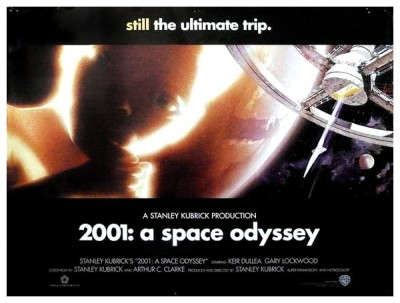 SYNOPSIS:
SYNOPSIS:
"When the world is ruled by apes, one particular group discovers a mysterious rectangular monolith nigh their dwelling, which imparts upon them the cognition of tool use, and enables them to evolve into people. A like monolith is discovered on the moon, and it is determined to accept come from an area nearly Jupiter. Astronaut Dave Bowman, along with four companions, sets off for Jupiter on a spaceship controlled by HAL 9000, a revolutionary computer system that is every chip humankind'south equal – and perhaps its superior. When HAL endangers the crew'southward lives for the sake of the mission, Bowman volition have to starting time overcome the computer, then travel to the birthplace of the monolith." (courtesy IMDB)
REVIEW:
Every now and and then y'all'll find two very different motion pictures released well-nigh simultaneously that deal with substantially the same subject. We encountered aliens in 1951 with The Thing From Another World (1951) and The Day The Globe Stood Nevertheless (1951), learned to love the bomb in 1964 with Fail-Prophylactic (1964) and Dr. Strangelove Or: How I Learned To Cease Worrying And Love The Bomb (1964), and became suspicious of the manufactured world around u.s. in 1999 with The Matrix (1999) and Dark City (1999). The year 1968 saw the release of two science fiction films whose stories were concerned the discovery of conflicting artifacts that lead to the realisation that mankind's evolution has resulted from alien manipulation dating back millions of years into the past. 1 of these films was Quatermass And The Pit (1968), which remains one of the best science fiction stories e'er told, ageless alongside more recent contenders like the Star Wars (1977) franchise, Close Encounters Of The 3rd Kind (1977), and Blade Runner (1982).
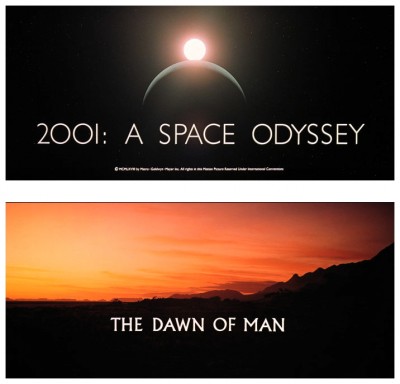 The other moving picture that twelvemonth was Stanley Kubrick's 2001: A Space Odyssey (1968), which incorporated elements from two stories by Arthur C. Clarke: The Sentinel and Childhood's Terminate. In the latter, the human being race in its present form is discovered to exist the equivalent of a caterpillar information technology terms of its cosmic development, and the book ends with all the children of the world forming a super gestalt which flies off into space to join others of its kind. Clarke was often dismissed as a pure applied science vitrify, merely much of his work deals with people encountering a profound and almost absolute mystery presented in a form that borders on the religious. In some other historic period Clarke's religious urges might have led him to become a theologian merely, having been seduced past science at an early age, he has been forced to rationalise his demand to believe in a Superior Being by disguising the concept in scientific terms. Thus 'God' becomes an alien race then incredibly evolved that it is beyond the comprehension of mere man minds. Erich Von Däniken tried to express the very aforementioned concept during the seventies, though in a far more pedestrian style and without any existent scientific backing.
The other moving picture that twelvemonth was Stanley Kubrick's 2001: A Space Odyssey (1968), which incorporated elements from two stories by Arthur C. Clarke: The Sentinel and Childhood's Terminate. In the latter, the human being race in its present form is discovered to exist the equivalent of a caterpillar information technology terms of its cosmic development, and the book ends with all the children of the world forming a super gestalt which flies off into space to join others of its kind. Clarke was often dismissed as a pure applied science vitrify, merely much of his work deals with people encountering a profound and almost absolute mystery presented in a form that borders on the religious. In some other historic period Clarke's religious urges might have led him to become a theologian merely, having been seduced past science at an early age, he has been forced to rationalise his demand to believe in a Superior Being by disguising the concept in scientific terms. Thus 'God' becomes an alien race then incredibly evolved that it is beyond the comprehension of mere man minds. Erich Von Däniken tried to express the very aforementioned concept during the seventies, though in a far more pedestrian style and without any existent scientific backing.
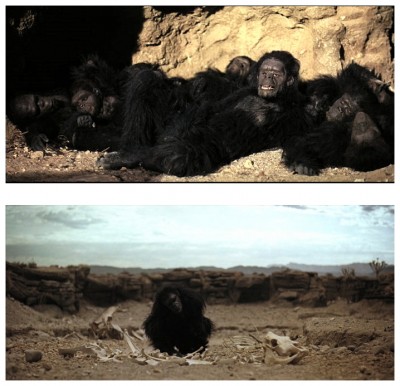 Clarke found the perfect collaborator in Stanley Kubrick. Both men were engineering science-fixated perfectionists with high energy drives and an insatiable curiosity, and both shared similar ideas on religion. Mr. Kubrick in one case confided in me, "I volition say that the God concept is at the centre of 2001, only non any traditional anthropomorphic image of God. I don't believe in whatsoever of World'south monotheistic religions, but I do believe that 1 can construct an intriguing scientific definition of God." Whether one considers 2001: A Infinite Odyssey equally a religious epic or as a scientific discipline fiction movie that deals with religious concepts scientifically, one has to admit that it succeeds in creating a sense of awe and wonder around the basic mystery of the universe, equally well equally producing in the viewer a feeling of vague optimism – a rare thing in nigh science fiction films.
Clarke found the perfect collaborator in Stanley Kubrick. Both men were engineering science-fixated perfectionists with high energy drives and an insatiable curiosity, and both shared similar ideas on religion. Mr. Kubrick in one case confided in me, "I volition say that the God concept is at the centre of 2001, only non any traditional anthropomorphic image of God. I don't believe in whatsoever of World'south monotheistic religions, but I do believe that 1 can construct an intriguing scientific definition of God." Whether one considers 2001: A Infinite Odyssey equally a religious epic or as a scientific discipline fiction movie that deals with religious concepts scientifically, one has to admit that it succeeds in creating a sense of awe and wonder around the basic mystery of the universe, equally well equally producing in the viewer a feeling of vague optimism – a rare thing in nigh science fiction films.
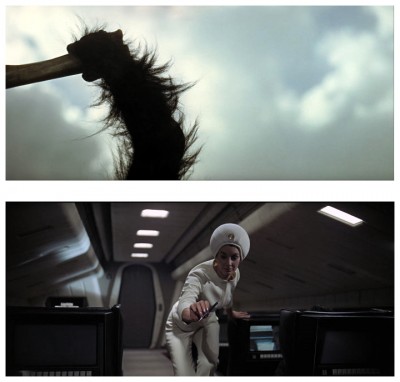 The plot of 2001: A Space Odyssey is simple. Information technology begins in prehistoric times with the arrival of an alien artifact in the form of a black monolith that triggers a number of primitive ape-men into becoming tool-users. The picture show jumps to the year 2001 when we bring together a Heywood Floyd (William Sylvester) on a space shuttle headed for the moon to supervise the handling of a remarkable discovery in the American sector. Cached beneath the moon's surface has been found what appears to be a man-made object – a blackness monolith. When the official and his companions arrive at the excavation and examine the object, touching it in much the aforementioned way as their ape-men ancestors, it all of a sudden emits an incredibly powerful radio bespeak (the thought of an object on the moon acting as a 'cosmic burglar alarm' when mankind arrives was suggested in Clarke's story The Sentinel). The film cuts to eighteen months later to a huge spaceship called Discovery on its way to 1 of the moons of Jupiter – the target of the radio axle transmitted from the monolith. In the Discovery are 5 men, three of whom are in suspended blitheness, and an artificially-intelligent calculator called HAL 9000 (Douglas Rain) which controls the ship. The ii witting astronauts, Dave Bowman (Keir Dullea) and Frank Poole (Gary Lockwood), after realise that HAL is malfunctioning, but before they can do annihilation most it, the computer kills Poole, shuts down the life support systems of the hibernating astronauts, and traps Bowman outside the ship. Bowman finally succeeds in forcing his manner back onboard the ship and heads straight for HAL'southward computer core where he proceeds to conciliate it.
The plot of 2001: A Space Odyssey is simple. Information technology begins in prehistoric times with the arrival of an alien artifact in the form of a black monolith that triggers a number of primitive ape-men into becoming tool-users. The picture show jumps to the year 2001 when we bring together a Heywood Floyd (William Sylvester) on a space shuttle headed for the moon to supervise the handling of a remarkable discovery in the American sector. Cached beneath the moon's surface has been found what appears to be a man-made object – a blackness monolith. When the official and his companions arrive at the excavation and examine the object, touching it in much the aforementioned way as their ape-men ancestors, it all of a sudden emits an incredibly powerful radio bespeak (the thought of an object on the moon acting as a 'cosmic burglar alarm' when mankind arrives was suggested in Clarke's story The Sentinel). The film cuts to eighteen months later to a huge spaceship called Discovery on its way to 1 of the moons of Jupiter – the target of the radio axle transmitted from the monolith. In the Discovery are 5 men, three of whom are in suspended blitheness, and an artificially-intelligent calculator called HAL 9000 (Douglas Rain) which controls the ship. The ii witting astronauts, Dave Bowman (Keir Dullea) and Frank Poole (Gary Lockwood), after realise that HAL is malfunctioning, but before they can do annihilation most it, the computer kills Poole, shuts down the life support systems of the hibernating astronauts, and traps Bowman outside the ship. Bowman finally succeeds in forcing his manner back onboard the ship and heads straight for HAL'southward computer core where he proceeds to conciliate it.
 When the Discovery arrives at its destination, Bowman sets off in the last remaining pod and encounters another much larger black monolith floating in infinite. As he approaches it he is all of a sudden bombarded with a stream of visual and physical sensations – in actuality he's entered a star gate and is traveling, via another dimension, over unimaginable distances. Finally he and his pod appear in an eerie, completely white room where he is aged by unseen entities and is and so transformed into a new type of beingness. The concluding shots are of an embryo-like class staring with an unreadable expression downwards upon the Earth. This is the Star Child, the next pace in human evolution, though what will happen now to all the unchanged millions on Globe is a question that receives no answer.
When the Discovery arrives at its destination, Bowman sets off in the last remaining pod and encounters another much larger black monolith floating in infinite. As he approaches it he is all of a sudden bombarded with a stream of visual and physical sensations – in actuality he's entered a star gate and is traveling, via another dimension, over unimaginable distances. Finally he and his pod appear in an eerie, completely white room where he is aged by unseen entities and is and so transformed into a new type of beingness. The concluding shots are of an embryo-like class staring with an unreadable expression downwards upon the Earth. This is the Star Child, the next pace in human evolution, though what will happen now to all the unchanged millions on Globe is a question that receives no answer.
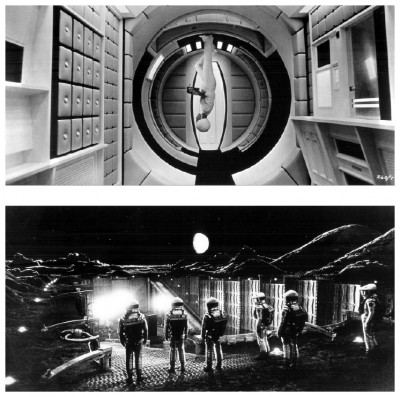 Reaction to the film on its initial release was downright hostile. Critics described information technology every bit confused, pretentious, disjointed, boring, inexplainable, dull and banal. The chief complaint was that it was difficult to empathise what it was all virtually, and Kubrick was defendant of being deliberately enigmatic in order to disguise the fact that the film wasn't really about anything at all. However to any regular reader of scientific discipline fiction, near of the film was perfectly articulate, then information technology was younger audiences, more familiar with the concepts, who first appreciated 2001: A Space Odyssey, subsequently ensuring its fiscal success and, at the same time, forcing many critics to re-examine their original opinions. Much of the film is deliberately ambiguous, revolving as it does around a giant question mark concerning mankind's relationship with both the universe and the mysterious beings that have been manipulating his development.
Reaction to the film on its initial release was downright hostile. Critics described information technology every bit confused, pretentious, disjointed, boring, inexplainable, dull and banal. The chief complaint was that it was difficult to empathise what it was all virtually, and Kubrick was defendant of being deliberately enigmatic in order to disguise the fact that the film wasn't really about anything at all. However to any regular reader of scientific discipline fiction, near of the film was perfectly articulate, then information technology was younger audiences, more familiar with the concepts, who first appreciated 2001: A Space Odyssey, subsequently ensuring its fiscal success and, at the same time, forcing many critics to re-examine their original opinions. Much of the film is deliberately ambiguous, revolving as it does around a giant question mark concerning mankind's relationship with both the universe and the mysterious beings that have been manipulating his development.
 If these mysteries were explained, the flick would lose most of its magic and wonder, yet people conditioned to having films provide clear-cut answers to everything persisted in asking Kubrick what the message of 2001: A Space Odyssey was, including me. He told me, "It's not a bulletin I e'er intend to convey in words. 2001 is a nonverbal feel. Out of two hours and 19 minutes of film, there are simply a niggling less than forty minutes of dialogue. I tried to create a visual experience, 1 that bypasses verbalised pigeonholing and directly penetrates the subconscious with emotional and philosophical content. You're gratis to speculate as yous wish about the philosophical and allegorical significant of the film, but I don't want to spell out a exact route map of 2001 that every viewer will feel obligated to pursue or else fear he'south missed the signal."
If these mysteries were explained, the flick would lose most of its magic and wonder, yet people conditioned to having films provide clear-cut answers to everything persisted in asking Kubrick what the message of 2001: A Space Odyssey was, including me. He told me, "It's not a bulletin I e'er intend to convey in words. 2001 is a nonverbal feel. Out of two hours and 19 minutes of film, there are simply a niggling less than forty minutes of dialogue. I tried to create a visual experience, 1 that bypasses verbalised pigeonholing and directly penetrates the subconscious with emotional and philosophical content. You're gratis to speculate as yous wish about the philosophical and allegorical significant of the film, but I don't want to spell out a exact route map of 2001 that every viewer will feel obligated to pursue or else fear he'south missed the signal."
 Some of those who missed the bespeak were established science fiction authors similar my sometime friend Ray Bradbury, who told me in no uncertain terms, "Clarke should take done the screenplay totally on his own and non allowed Kubrick to lay hands on information technology. The examination of a film is whether or non we care when one of the astronauts dies – nosotros do non. The freezing impact of Antonioni, whose ghost haunts Kubrick, has turned everything here to ice. I recall it'due south a gorgeous film, one of the most beautifully photographed pictures in the history of motion pictures. Unfortunately in that location are no well-directed scenes, and the dialogue is banal to the point of extinction." No affair what I said, Ray couldn't grasp the unproblematic fact that the dialogue and characters were deliberately made cold and business-like, not only to make HAL appear to be the most human character in the film, but also to reflect the banalities of flesh moving into space. Much of mankind'south time is spent eating or thinking about food, from the ape-human being's start taste of meat to the space-bound Howard Johnson's restaurant to Heywood Floyd deciding which sandwich to eat. No screenwriter in his right mind would always write such dialogue unless, of course, there was a point to be made.
Some of those who missed the bespeak were established science fiction authors similar my sometime friend Ray Bradbury, who told me in no uncertain terms, "Clarke should take done the screenplay totally on his own and non allowed Kubrick to lay hands on information technology. The examination of a film is whether or non we care when one of the astronauts dies – nosotros do non. The freezing impact of Antonioni, whose ghost haunts Kubrick, has turned everything here to ice. I recall it'due south a gorgeous film, one of the most beautifully photographed pictures in the history of motion pictures. Unfortunately in that location are no well-directed scenes, and the dialogue is banal to the point of extinction." No affair what I said, Ray couldn't grasp the unproblematic fact that the dialogue and characters were deliberately made cold and business-like, not only to make HAL appear to be the most human character in the film, but also to reflect the banalities of flesh moving into space. Much of mankind'south time is spent eating or thinking about food, from the ape-human being's start taste of meat to the space-bound Howard Johnson's restaurant to Heywood Floyd deciding which sandwich to eat. No screenwriter in his right mind would always write such dialogue unless, of course, there was a point to be made.
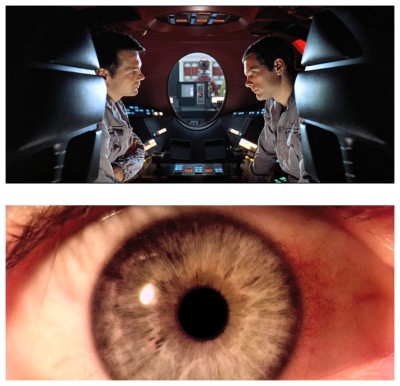 Which brings me Kubrick's treatment of humanity. Information technology had long been a tradition in old-school scientific discipline fiction to nowadays flesh as a plucky picayune animal who faces the universe with a slide-dominion in one hand and a equalizer in the other, and shortly has information technology cowering in fear. On the other paw, Kubrick treats the human being race with cold irony, presenting mankind as an impotent, rather pathetic, helpless pawn of forces far across his comprehension. To many this was a step backwards to a fourth dimension when religion ruled flesh past fear, a time before science enabled flesh to break gratis of his bonds and put to residue all the old superstitions. Author Lester Del Rey, who once wrote a story in which mankind declares war on God and wins, was specially incensed past 2001: A Space Odyssey. In old-schoolhouse scientific discipline fiction, engineering was normally the means whereby flesh conquers the universe, but when Kubrick bound-cuts from the ape-man hurling his bone-weapon into the air to the shot of a satellite – a weapons platform – he is suggesting that, for all the advances in applied science that lead from the os to the satellite, nothing has really changed. Mankind is still an ape animal playing with his toys – he hasn't adult ane iota in the cosmic sense.
Which brings me Kubrick's treatment of humanity. Information technology had long been a tradition in old-school scientific discipline fiction to nowadays flesh as a plucky picayune animal who faces the universe with a slide-dominion in one hand and a equalizer in the other, and shortly has information technology cowering in fear. On the other paw, Kubrick treats the human being race with cold irony, presenting mankind as an impotent, rather pathetic, helpless pawn of forces far across his comprehension. To many this was a step backwards to a fourth dimension when religion ruled flesh past fear, a time before science enabled flesh to break gratis of his bonds and put to residue all the old superstitions. Author Lester Del Rey, who once wrote a story in which mankind declares war on God and wins, was specially incensed past 2001: A Space Odyssey. In old-schoolhouse scientific discipline fiction, engineering was normally the means whereby flesh conquers the universe, but when Kubrick bound-cuts from the ape-man hurling his bone-weapon into the air to the shot of a satellite – a weapons platform – he is suggesting that, for all the advances in applied science that lead from the os to the satellite, nothing has really changed. Mankind is still an ape animal playing with his toys – he hasn't adult ane iota in the cosmic sense.
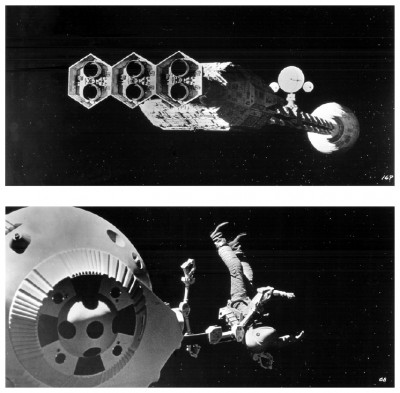 Despite the breathtaking technological wonders revealed during Heywood Floyd's trip to the moon – the spaceships, the space station, the gadgetry – the overall effect of gleaming white interiors suggests a feeling of sterility. Cocooned in his marvelous machines, mankind has come to a dead-finish. This feeling is reinforced by all the people nosotros meet during the film – they are banal and lifeless, and their chat consists of aught merely exchanged banalities. The nearest thing to an emotional character is the computer HAL 9000 who breaks down under the strain and goes insane. Mankind had fashioned him in his own image but he wasn't up to the task and, like mankind, couldn't cope with concepts beyond his programmed powers of comprehension. HAL represents another expressionless-finish.
Despite the breathtaking technological wonders revealed during Heywood Floyd's trip to the moon – the spaceships, the space station, the gadgetry – the overall effect of gleaming white interiors suggests a feeling of sterility. Cocooned in his marvelous machines, mankind has come to a dead-finish. This feeling is reinforced by all the people nosotros meet during the film – they are banal and lifeless, and their chat consists of aught merely exchanged banalities. The nearest thing to an emotional character is the computer HAL 9000 who breaks down under the strain and goes insane. Mankind had fashioned him in his own image but he wasn't up to the task and, like mankind, couldn't cope with concepts beyond his programmed powers of comprehension. HAL represents another expressionless-finish.
 The moving-picture show, of course, wasn't a drama about people in the accepted sense of the word. It wasn't about the diverse individual characters, it didn't matter whether they lived or died, which is why we don't intendance very much when Poole and the others are killed. Information technology was actually about the human race as a whole and its position in the universe. Kubrick's aim was to force his audiences to look at these questions anew, to re-examine their ain perceptions of the universe, all of which would have been obscured by the presence of emotionally-involving 'existent' characters. Any games of estimation ane may play with 2001: A Space Odyssey, one has to admit that it's a stunning visual and aural experience, right from the first shots of the Earth, moon and sun in alignment, accompanied past the Dawn passage of Richard Strauss's Also Sprach Zarathustra. Kubrick's choice of music throughout the film shows a touch of genius, like accompanying the shots of the Orion III space shuttle moving towards the space station with The Blue Danube.
The moving-picture show, of course, wasn't a drama about people in the accepted sense of the word. It wasn't about the diverse individual characters, it didn't matter whether they lived or died, which is why we don't intendance very much when Poole and the others are killed. Information technology was actually about the human race as a whole and its position in the universe. Kubrick's aim was to force his audiences to look at these questions anew, to re-examine their ain perceptions of the universe, all of which would have been obscured by the presence of emotionally-involving 'existent' characters. Any games of estimation ane may play with 2001: A Space Odyssey, one has to admit that it's a stunning visual and aural experience, right from the first shots of the Earth, moon and sun in alignment, accompanied past the Dawn passage of Richard Strauss's Also Sprach Zarathustra. Kubrick's choice of music throughout the film shows a touch of genius, like accompanying the shots of the Orion III space shuttle moving towards the space station with The Blue Danube.
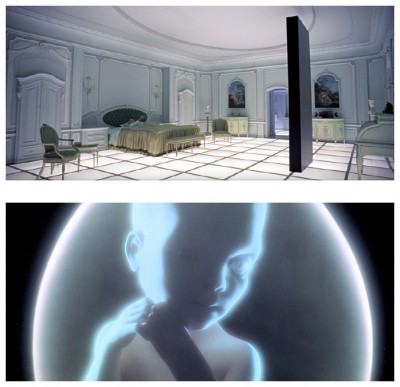 On a technical level, 2001: A Space Odyssey has never really been surpassed, certainly not until CGI was properly adult during the nineties. The special effects, supervised past Kubrick himself and created by a large team of experts headed past Wally Veevers, Tom Howard, Douglas Trumbull and Con Pederson, are amazing in their realism. Eighteen months were spent shooting them at a cost of US$6.5 meg – the full cost of the picture show was US$10.5 million. Mr. Kubrick told me, "I felt it was necessary to make this film in such a way that every special effects shot in information technology would exist completely convincing, something that had never before been accomplished in a moving-picture show." The model work and associated furnishings in, for instance, the Star Wars films were certainly spectacular – more than those in 2001: A Infinite Odyssey, peradventure, and more ambitious in scope – but technically the model shots in Kubrick's picture are far superior, as whatever careful comparison volition readily show.
On a technical level, 2001: A Space Odyssey has never really been surpassed, certainly not until CGI was properly adult during the nineties. The special effects, supervised past Kubrick himself and created by a large team of experts headed past Wally Veevers, Tom Howard, Douglas Trumbull and Con Pederson, are amazing in their realism. Eighteen months were spent shooting them at a cost of US$6.5 meg – the full cost of the picture show was US$10.5 million. Mr. Kubrick told me, "I felt it was necessary to make this film in such a way that every special effects shot in information technology would exist completely convincing, something that had never before been accomplished in a moving-picture show." The model work and associated furnishings in, for instance, the Star Wars films were certainly spectacular – more than those in 2001: A Infinite Odyssey, peradventure, and more ambitious in scope – but technically the model shots in Kubrick's picture are far superior, as whatever careful comparison volition readily show.
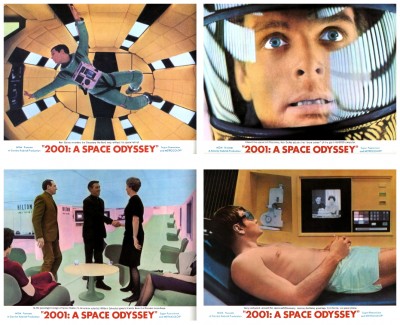 Kubrick wisely rejected the use of any automated matting process, which invariably produces matte lines and thus destroys the illusion. Instead he insisted that all the various components of each effects shot exist combined on picture by means of hand-drawn mattes. This meant, for instance, that a scene showing a spaceship passing confronting a background of stars involved each shot of the spaceship being meticulously rotoscoped frame-by-frame onto animation cells which were used to produce mattes to blank out the respective areas on the groundwork footage. Much of the motion-picture show was put together in the fashion of a traditionally animated cartoon, the primary deviation being that all the image components had to appear as realistic as possible, thus making the task much more difficult that that faced by drawing animators who merely had to combine drawings. These methods produced the best results merely were fourth dimension-consuming and extremely expensive and, if the Star Wars technicians had followed the same path, it would have added at least a yr to the production and price more than than twice as much as it did.
Kubrick wisely rejected the use of any automated matting process, which invariably produces matte lines and thus destroys the illusion. Instead he insisted that all the various components of each effects shot exist combined on picture by means of hand-drawn mattes. This meant, for instance, that a scene showing a spaceship passing confronting a background of stars involved each shot of the spaceship being meticulously rotoscoped frame-by-frame onto animation cells which were used to produce mattes to blank out the respective areas on the groundwork footage. Much of the motion-picture show was put together in the fashion of a traditionally animated cartoon, the primary deviation being that all the image components had to appear as realistic as possible, thus making the task much more difficult that that faced by drawing animators who merely had to combine drawings. These methods produced the best results merely were fourth dimension-consuming and extremely expensive and, if the Star Wars technicians had followed the same path, it would have added at least a yr to the production and price more than than twice as much as it did.
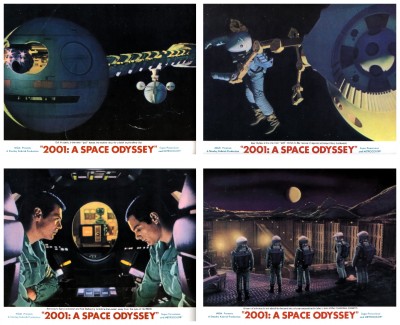 The legend at the time was that the film should only exist viewed while stoned or, better yet, on LSD, but this psychedelic rite-of-passage, which ultimately brings Dave Bowman contiguous with his sterile, luxurious dying self is not the finish. The final image shows Bowman transformed to a foetus hovering higher up the Earth. Flesh, for all its potential (all babies take potential) has nonetheless to accomplish its growth. Nosotros take got everywhere just no-where notwithstanding, peradventure because of our warm feelings towards babies, the final image is less chilling than almost everything that precedes information technology. In the mood of cocky-doubt that had hit the West (especially Americans) so very hard during the Vietnam dispute, the self-flagellation of such a flick may have seemed not simply acceptable just somehow almost joyous.
The legend at the time was that the film should only exist viewed while stoned or, better yet, on LSD, but this psychedelic rite-of-passage, which ultimately brings Dave Bowman contiguous with his sterile, luxurious dying self is not the finish. The final image shows Bowman transformed to a foetus hovering higher up the Earth. Flesh, for all its potential (all babies take potential) has nonetheless to accomplish its growth. Nosotros take got everywhere just no-where notwithstanding, peradventure because of our warm feelings towards babies, the final image is less chilling than almost everything that precedes information technology. In the mood of cocky-doubt that had hit the West (especially Americans) so very hard during the Vietnam dispute, the self-flagellation of such a flick may have seemed not simply acceptable just somehow almost joyous.
 I think it fair to presume that, as a lament for the sterility of human being achievement, 2001: A Space Odyssey is the work of a unmarried mitt, and that hand was Kubrick'south, not Clarke's. Earlier yous have fourth dimension to question that argument, I'll quickly wrap-up, but not before thanking Playboy Magazine (September 1968) and Cinefex Magazine (April 2001) for assisting my enquiry for this commodity, and politely invite you to bring together me next week with your morbid marvel well-prepared for some other footstep beyond the inner limits of the outer sanctum with a touch of evil from the amazing zone known as…Horror News! Run into you next Midweek!
I think it fair to presume that, as a lament for the sterility of human being achievement, 2001: A Space Odyssey is the work of a unmarried mitt, and that hand was Kubrick'south, not Clarke's. Earlier yous have fourth dimension to question that argument, I'll quickly wrap-up, but not before thanking Playboy Magazine (September 1968) and Cinefex Magazine (April 2001) for assisting my enquiry for this commodity, and politely invite you to bring together me next week with your morbid marvel well-prepared for some other footstep beyond the inner limits of the outer sanctum with a touch of evil from the amazing zone known as…Horror News! Run into you next Midweek!
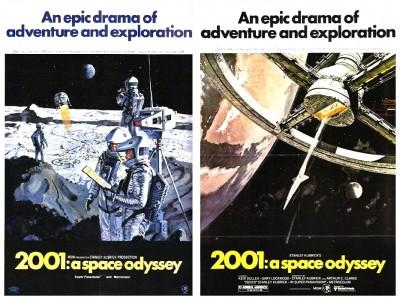 2001: A Space Odyssey (1968)
2001: A Space Odyssey (1968)
Source: https://horrornews.net/48518/film-review-2001-a-space-odyssey-1968/
0 Response to "Minnesotan Reviewed 2001 Comic a Space Odyssey Review"
Post a Comment